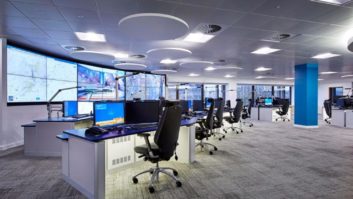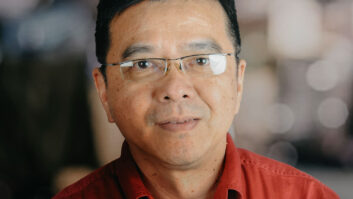
A traffic management installation in Washington needed to accommodate 750 video feeds and a display wall comprising 102 displays. Rob Lane reports on how Diversified of Seattle managed the project.
When the Washington Department of Transportation (WSDOT) moved its Traffic Management Centre (TMC) to its new headquarters, management commissioned a much larger highway monitoring system. The project called for the management and display of 750 live video feeds within the new Operations Centre, and elsewhere in the building.
For the Operations Centre, WSDOT demanded a videowall for seamless and constant views of traffic conditions, with instant enlargement of areas of interest. “The videowall is used for collaboration and continuous monitoring of problem sections where we know accidents are likely to occur,” explains Michael Forbis, ITS program manager at WSDOT. “The TMC in the old building had about 40 monitors, and we were always trying to squeeze in more, for more camera views.”
Exceptionally prepared
WSDOT engaged Seattle-based Diversified for the installation, although Forbis selected all of the technology. Indeed, Diversified was extremely impressed with the WSDOT team’s input, commenting that it exhibited an “exceptional” level of preparedness.
“He [Forbis] anticipated what we needed for seamless integration, from power and storage, to identifying space for server rooms,” says Jackie McNeice, installation manager for Diversified. “Michael and WSDOT were also flexible and understanding problem-solvers, which made it a very easy project for us.”
A two-phase project taking place over nine months, it required the Diversified project management and integration teams to work seamlessly with WSDOT and the general building contractor.
The wall needed to comprise individual monitors that could be swapped out in the event of failure – rather than a huge one-unit wall that would incur higher upgrade costs: “We can replace the wall in sections for smaller amounts of money over time as needed,” says Forbis.
The installation went smoothly, particularly considering its size and scope. “Broken out individually, there was nothing out of the ordinary,” says Pete Monuteaux, account executive at Diversified. “It was just the scale of the project that made it stand out.”
Issues addressed
Indeed, only a couple of issues arose during the build. During installation of the videowall, the Diversified team discovered that the sheet metal in the false wall built to hold the Peerless-AV brackets didn’t go up as high as initially thought – so additional support was required.
Another potential issue with the wall was as a result of the building’s location in the Pacific northwest: “The building came with an earthquake requirement, so we had to run the mounting by a structural engineer to make sure the monitors would stay on the walls in case of an earthquake,” Forbis explains.
The unusual scale meant that the project was particularly bespoke, with very little in the way of ‘templating’. “Unless it’s a situation where a solution is being copied over to another location as part of a larger rollout plan, it’s unusual to have a templated, formulaic approach, and very rare the larger the project is,” continues Monuteaux. “The volume of displays and complexity of the video processing portion of the project put this on the larger side of projects in this industry.”
Phase one saw the installation of 90 NEC Display Solutions P463 46in monitors, each with an NEC OPS-PCIC-SWS video processor. The wall is configured in three sections – left, centre, and right – with the left and right sections inclined towards the centre of the room by 30°.
Each wall display was installed using Peerless-AV’s easy-release SmartMount Full-Service Video Wall Mount (DS-VW765-LAND). A further 10 displays throughout the build were installed on SF640S SmartMount Universal Flat Wall Mounts, with six installed using the SF660S mount.
In phase two, the centre of the videowall was installed. This features a 3×4 configuration of NEC X554-UNS 55in monitors, driven by a Barco TransForm N video processor and CMS software. Personnel can grab images from an individual display and expand them on the videowall – “amplified viewing”, which provides detailed views of crises and enhances TMC’s effectiveness in handling such situations.
Diversified partnered with Vistacom for the configuration of and training for the Barco CMS collaboration software and the TransForm N streaming video input node, which comprised the networked visualisation solution driving videowall content.
www.barco.com
www.diversifiedus.com
www.nec-display-solutions.com
www.peerless-av.com
www.vistacominc.com







